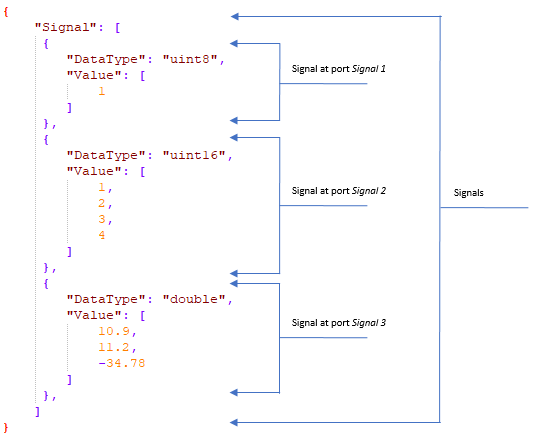WebSocket Subscribe
Subscribe to the JSON data received by a WebSocket server
Add-On Required: This feature requires the Simulink Support Package for Arduino Hardware add-on.
Libraries:
Simulink Support Package for Arduino Hardware /
WiFi
Description
The WebSocket subscribe block subscribes to the data received by a WebSocket server identified by an IP address and a port. The received data must be in JavaScript Object Notation (JSON) format, which can be interpreted by a WebSocket client to manipulate the data.
Supported Arduino Boards
Arduino® MKR1000
Arduino MKR WIFI 1010
Arduino Nano 33 IoT
Arduino compatible ESP32 – WROOM board
Arduino compatible ESP32 – WROVER board
WebSocket JSON Data
This figure shows the signals in JSON format.

Ports
Output
Parameters
Version History
Introduced in R2020b